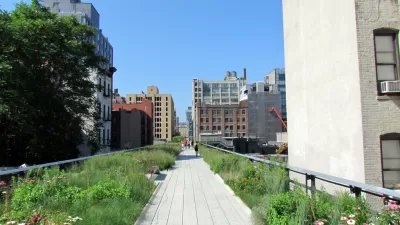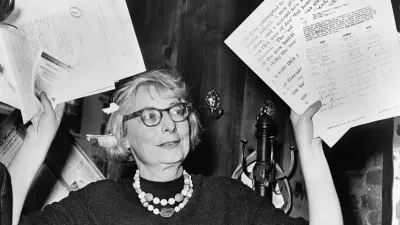Landscape Architecture is a field in the ascendency, writes Alan G. Brake. Its rise can be traced to the inability of Architects and Planners to engage with some of the most important challenges of our time.

"In recent years, landscape architects have seen their profile rise," explains Brake. "The discipline has gained stature in the public’s imagination, as well as among the allied disciplines of architecture, planning, and even civil and transportation engineering," owing to changes in federal and city policy, and the ability of landscape architects to redefine, and expand, the role of their field.
As much as the field's rise can be traced to the efforts of its practitioners, it also owes its ascendence to "weaknesses in contemporary architecture and planning" including a focus on architecture-as-object and planning's fear of engaging with design, argues Brake.
"Landscape architects are offering redemptive visions for neglected, damaged, and underutilized places. Environmental problems may seem overwhelming and insurmountable. But landscape architects offer solutions to improve our roofs, our blocks, our neighborhoods, a nearby waterway, or the city at large."
FULL STORY: Landscape Architecture's Ascendance

Planetizen Federal Action Tracker
A weekly monitor of how Trump’s orders and actions are impacting planners and planning in America.

Maui's Vacation Rental Debate Turns Ugly
Verbal attacks, misinformation campaigns and fistfights plague a high-stakes debate to convert thousands of vacation rentals into long-term housing.

Restaurant Patios Were a Pandemic Win — Why Were They so Hard to Keep?
Social distancing requirements and changes in travel patterns prompted cities to pilot new uses for street and sidewalk space. Then it got complicated.

In California Battle of Housing vs. Environment, Housing Just Won
A new state law significantly limits the power of CEQA, an environmental review law that served as a powerful tool for blocking new development.

Boulder Eliminates Parking Minimums Citywide
Officials estimate the cost of building a single underground parking space at up to $100,000.

Orange County, Florida Adopts Largest US “Sprawl Repair” Code
The ‘Orange Code’ seeks to rectify decades of sprawl-inducing, car-oriented development.
Urban Design for Planners 1: Software Tools
This six-course series explores essential urban design concepts using open source software and equips planners with the tools they need to participate fully in the urban design process.
Planning for Universal Design
Learn the tools for implementing Universal Design in planning regulations.
Heyer Gruel & Associates PA
JM Goldson LLC
Custer County Colorado
City of Camden Redevelopment Agency
City of Astoria
Transportation Research & Education Center (TREC) at Portland State University
Jefferson Parish Government
Camden Redevelopment Agency
City of Claremont



























